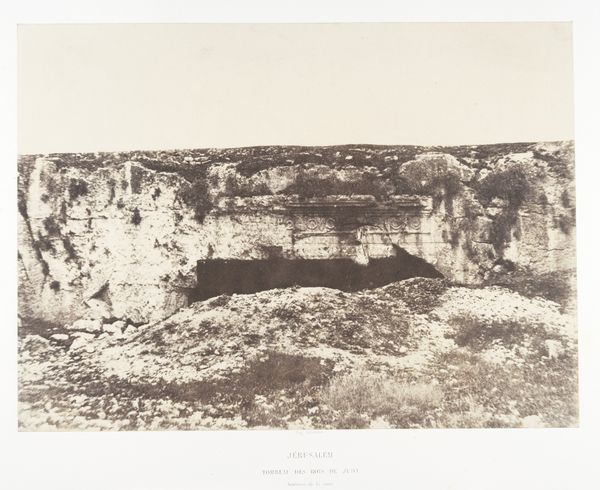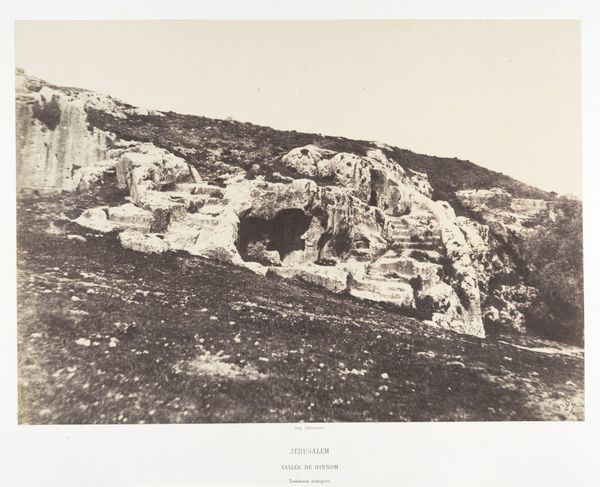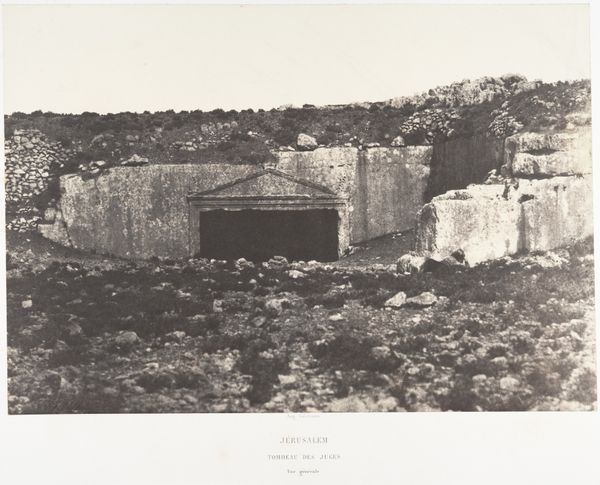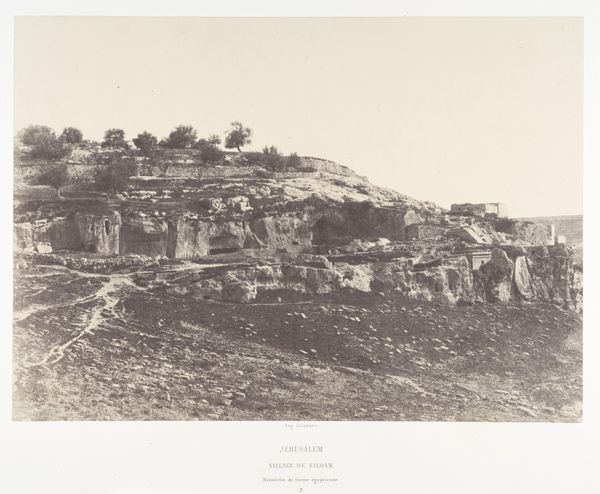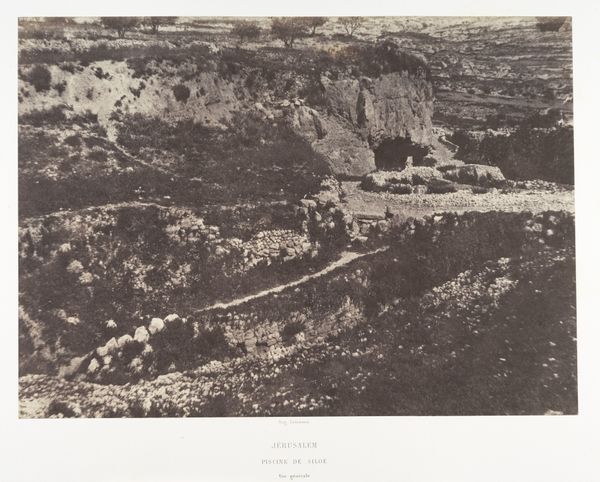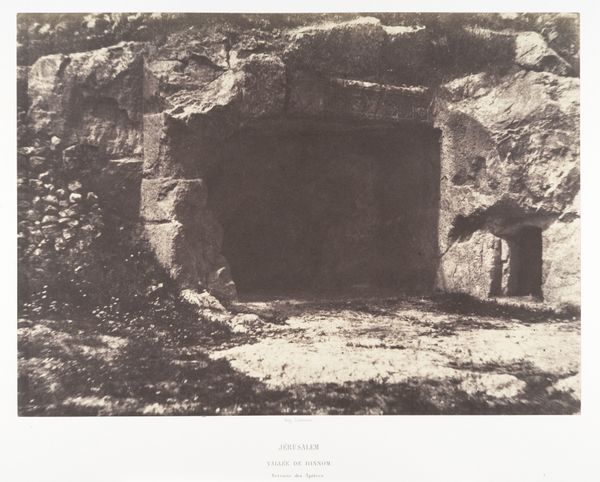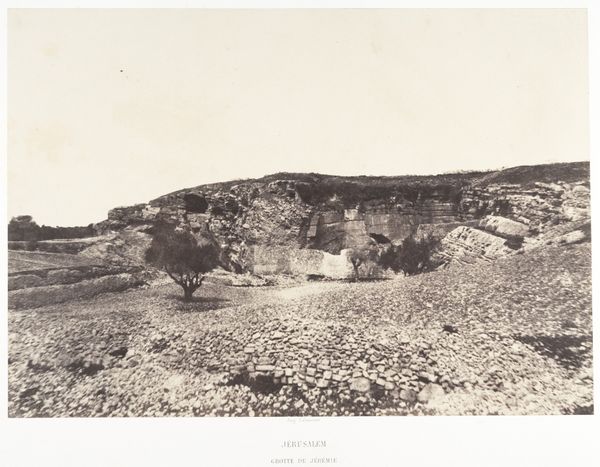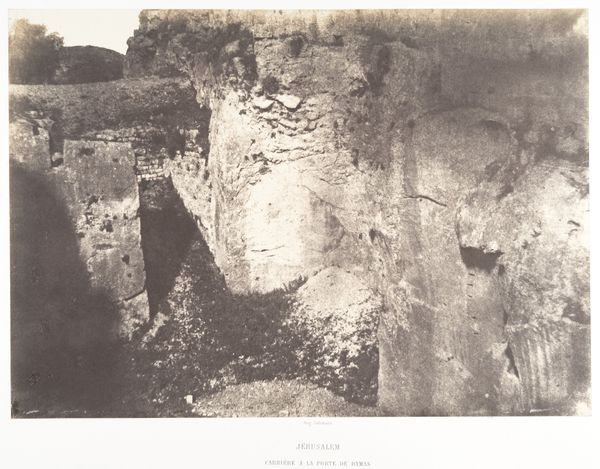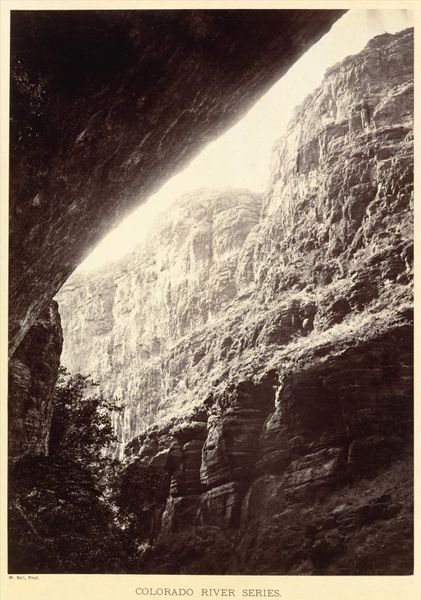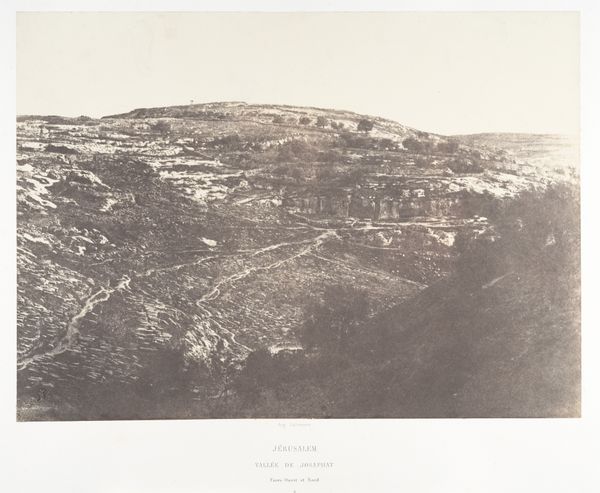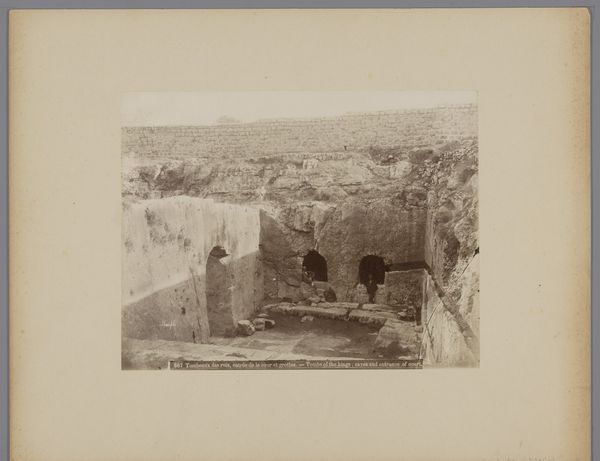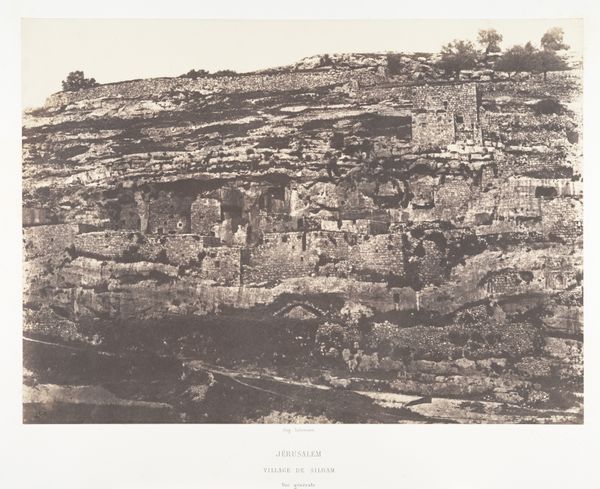
daguerreotype, photography
#
landscape
#
daguerreotype
#
photography
#
ancient-mediterranean
Dimensions: Image: 23.7 x 33.6 cm (9 5/16 x 13 1/4 in.) Mount: 44.9 x 60.4 cm (17 11/16 x 23 3/4 in.)
Copyright: Public Domain
Curator: This is Auguste Salzmann’s “Jerusalem, Tombeau Juif, Details," a daguerreotype created sometime between 1854 and 1859. It resides here with us at the Metropolitan Museum. Editor: Immediately, I sense a poignant stillness. The light, or lack of it, plays upon these ancient stones. It's as if the silence of centuries has been perfectly captured. It’s melancholic and strangely… comforting? Curator: The melancholic effect, I think, speaks directly to Salzmann’s context. He was commissioned to photograph the Holy Land with the express intention of "proving" biblical accounts. However, what he returned with were these profoundly still and contemplative images. Note, specifically, his technique and the tangible surface quality. Editor: Right, you see how the daguerreotype gives it that silvery sheen? The detail is astonishing, particularly considering the technology of the time. What interests me, though, is that conflict. Imagine being sent on such a literal-minded errand, and returning with something so evocative and… dare I say, spiritual in a way they weren't expecting? Curator: Precisely! Salzmann’s meticulous craft resists a purely documentary reading. His photographic choices speak volumes. The lengthy exposure times would demand subjects that were largely unchanging – like buildings and monuments, instead of the human narrative hoped for. It reveals, rather, the slow, geological, even architectural impact of faith and time. Editor: So, we're not just looking at a photograph of a tomb. We're confronting the weight of history, etched into stone, through the mediation of very early photographic processes and that ghostly image quality… It's a testament to impermanence and, perhaps, enduring faith found in the landscape. It's beautiful, yet it's unsettling, isn’t it? Curator: Exactly, and considering Salzmann's role, we must consider the labor involved—his choice of medium and processes over commercial availability, which brings forth interesting conversations on authenticity and intent within image-making itself. It becomes not just a tomb but also an object that speaks volumes of the choices available, and chosen by, a 19th-century photographer. Editor: A powerful collision of artistic expression and historical document—the quiet details shout, don't they? Thank you for highlighting this one; it's gotten under my skin, in a good way! Curator: My pleasure, a lot of nuance is found upon closer inspection.
Comments
No comments
Be the first to comment and join the conversation on the ultimate creative platform.
